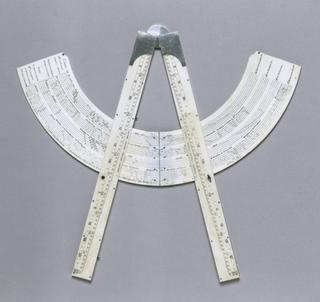
Chinese abacus
- Made:
- China






Chinese abacus
The abacus supplanted the use of counting rods in China from about AD 1300, and being intrinsically practical survived until the advent of the electronic calculator. The original Chinese version operates in base 16. Takashi Kojima, writing in 1954 of the Japanese version, the soroban, says: ‘The tradesman does not perplex himself with mental arithmetic, but instead seizes his soroban, prepares it by a tilt and a rattling sweep of his hand, and after a deft manipulation of rapid clicks, reads off the price. The soroban can perform in a fraction of time a difficult arithmetic calculation that the Westerner could do laboriously only by means of pencil and paper.’
Details
- Category:
- Mathematics
- Object Number:
- 1913-532
- Materials:
- wood (unidentified)
- Measurements:
-
overall: 175 mm x 338 mm x 22 mm,
- type:
- abacus (chinese)
- credit:
- Mr P. Abbott




